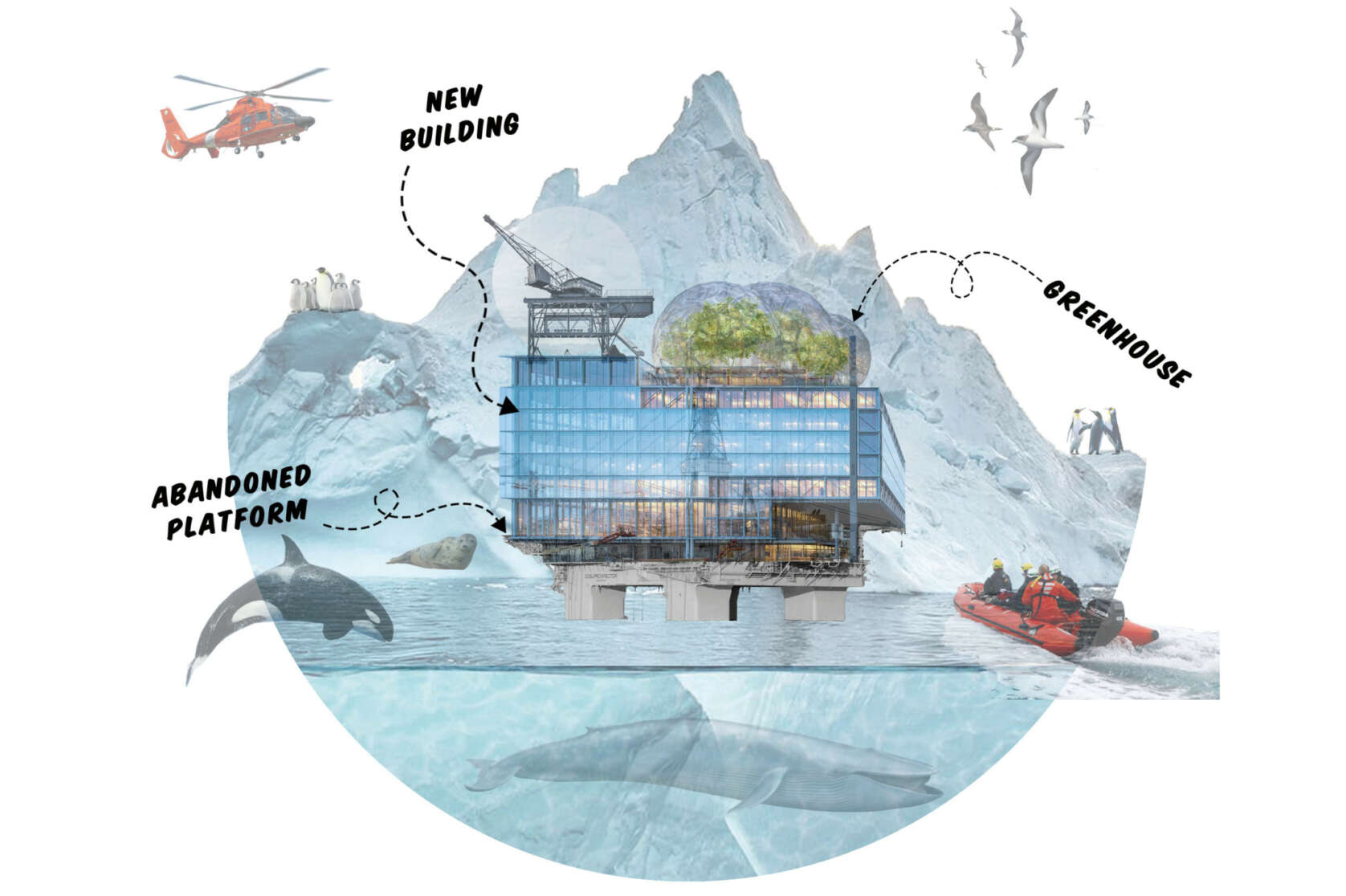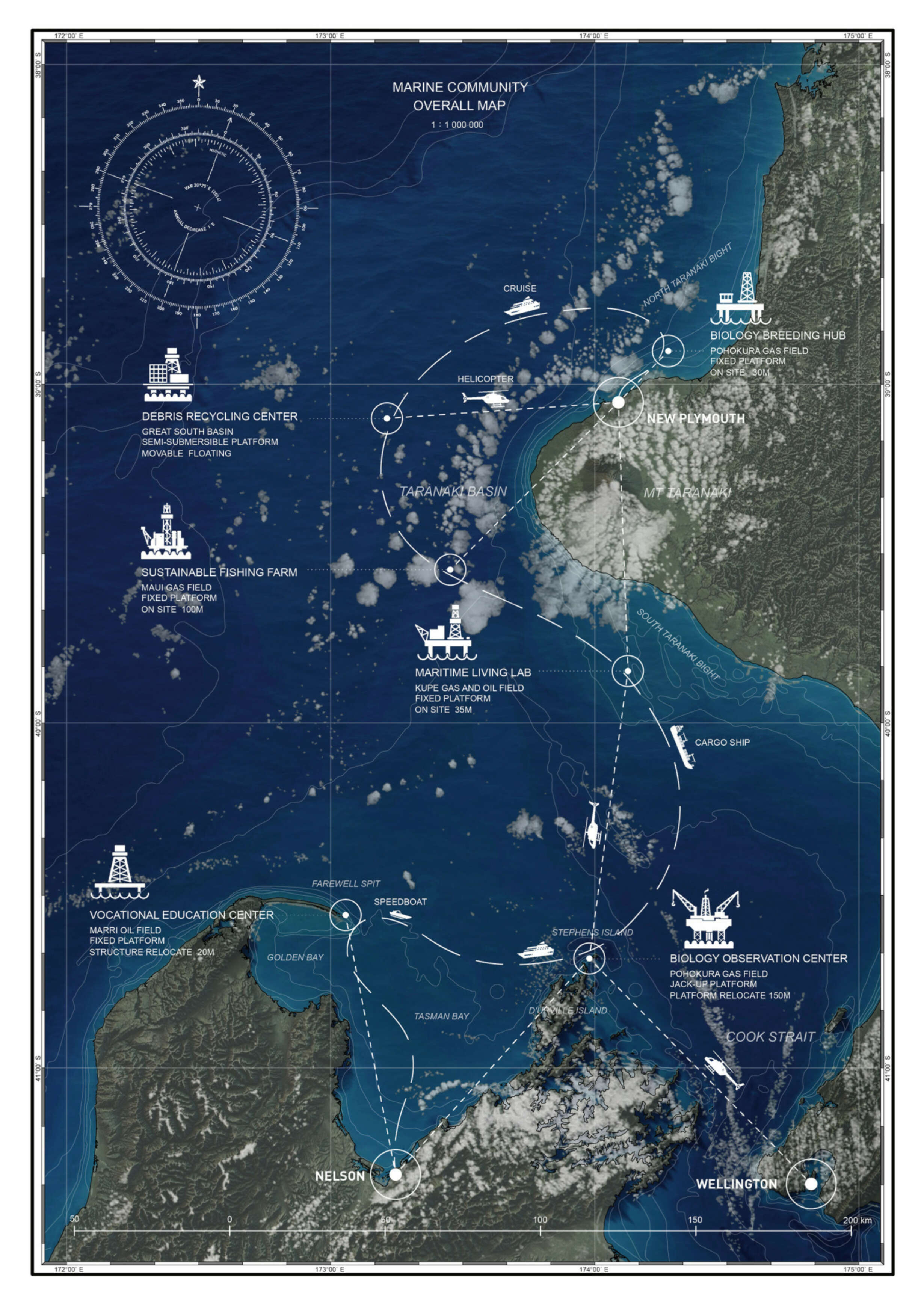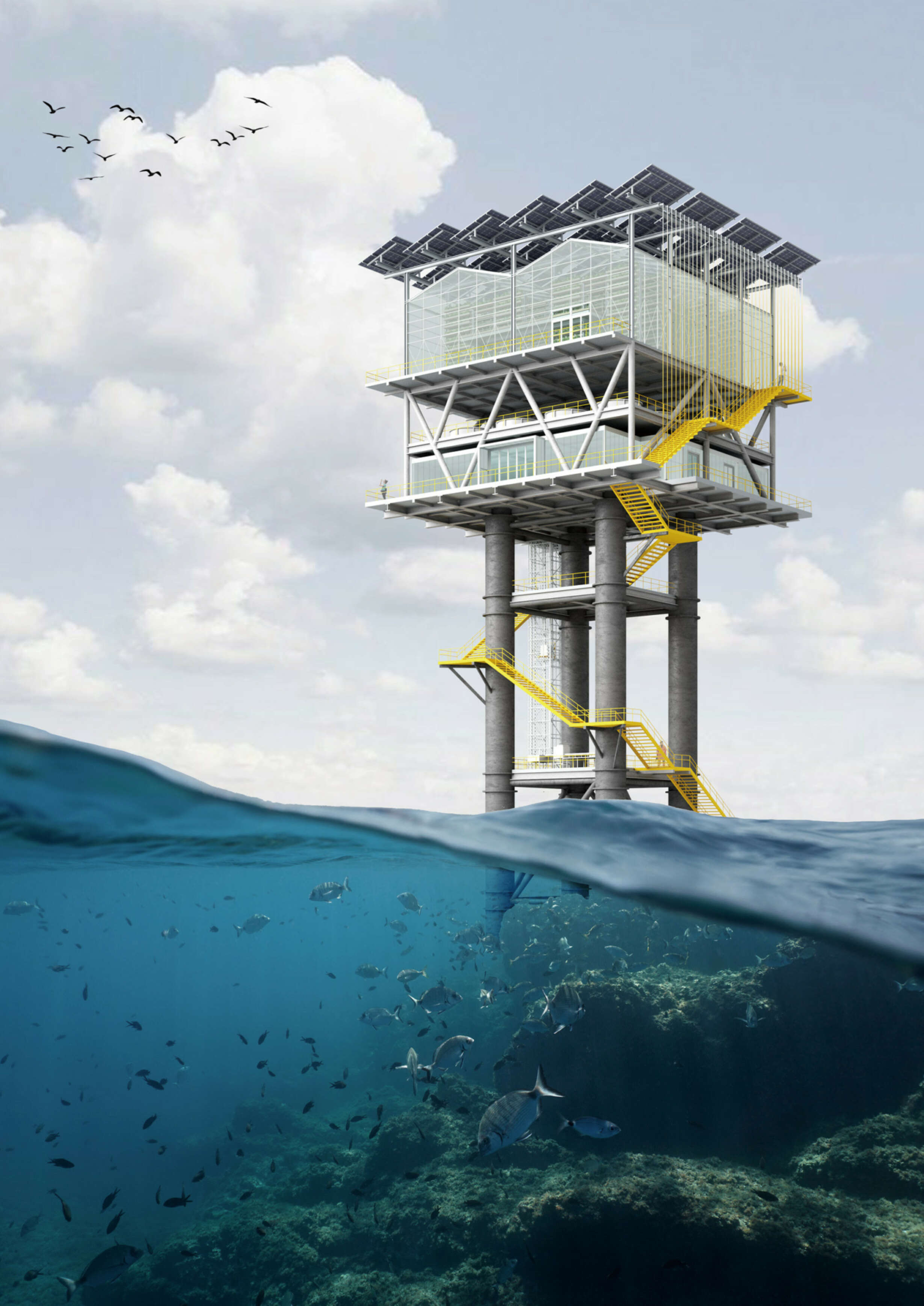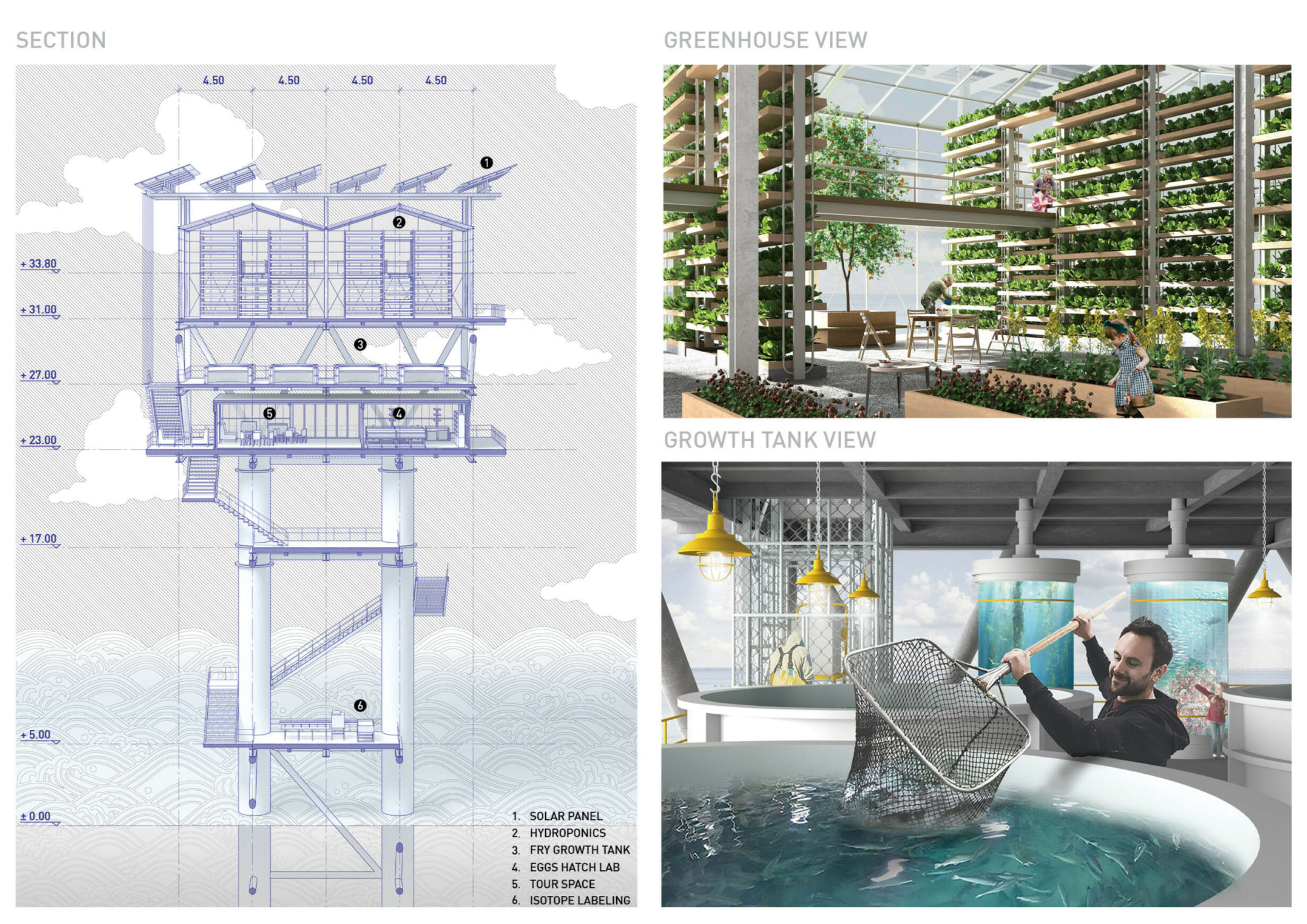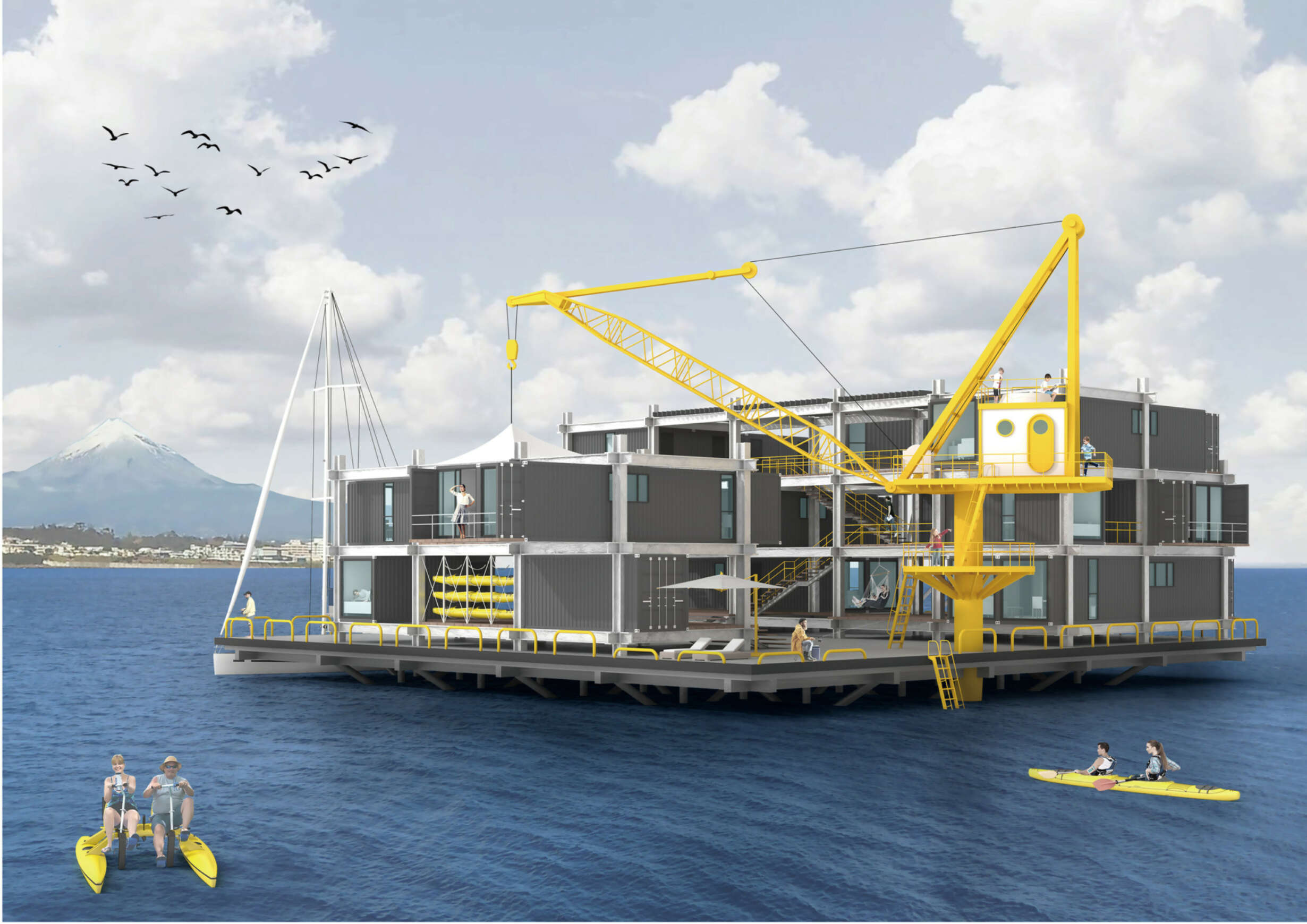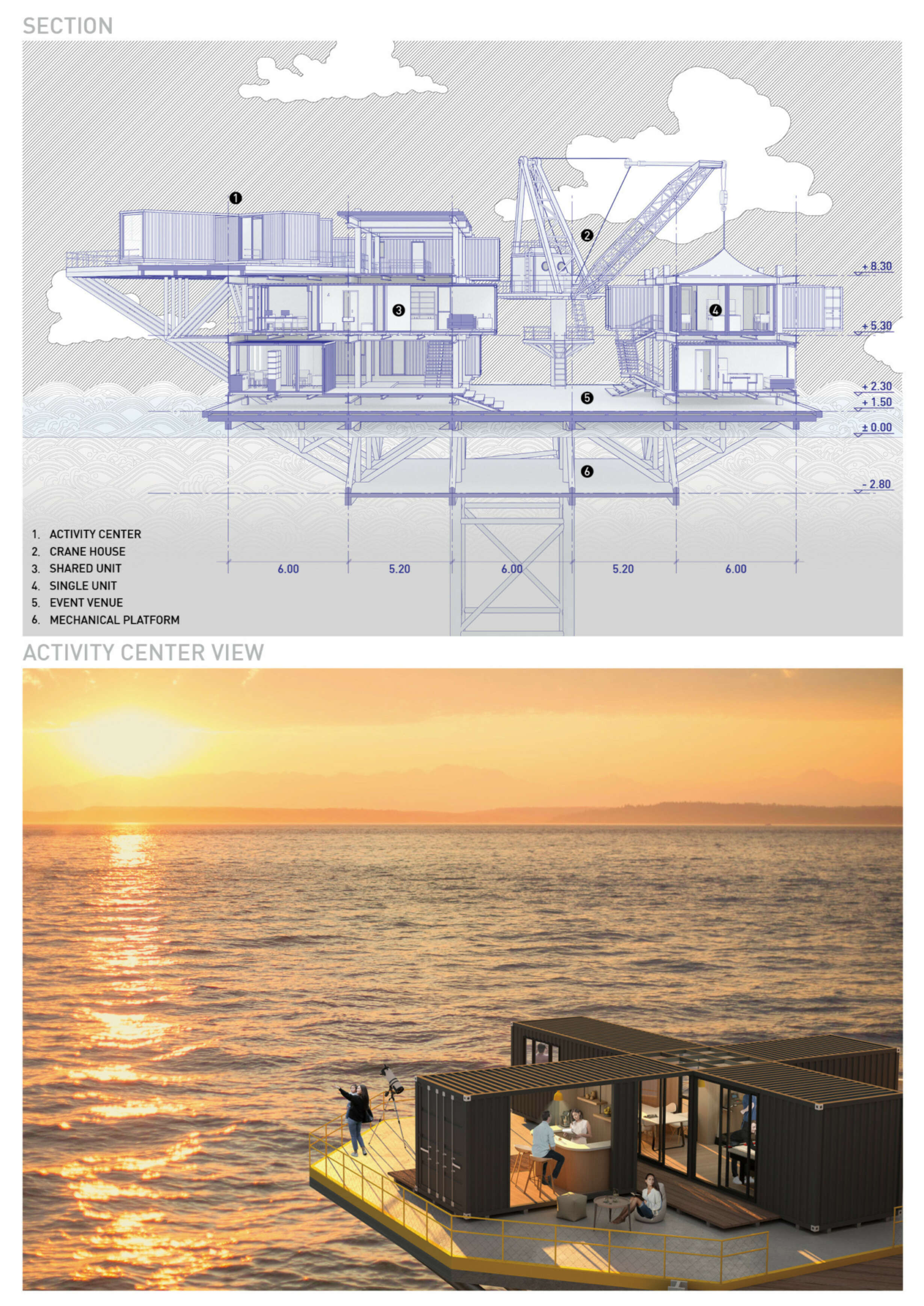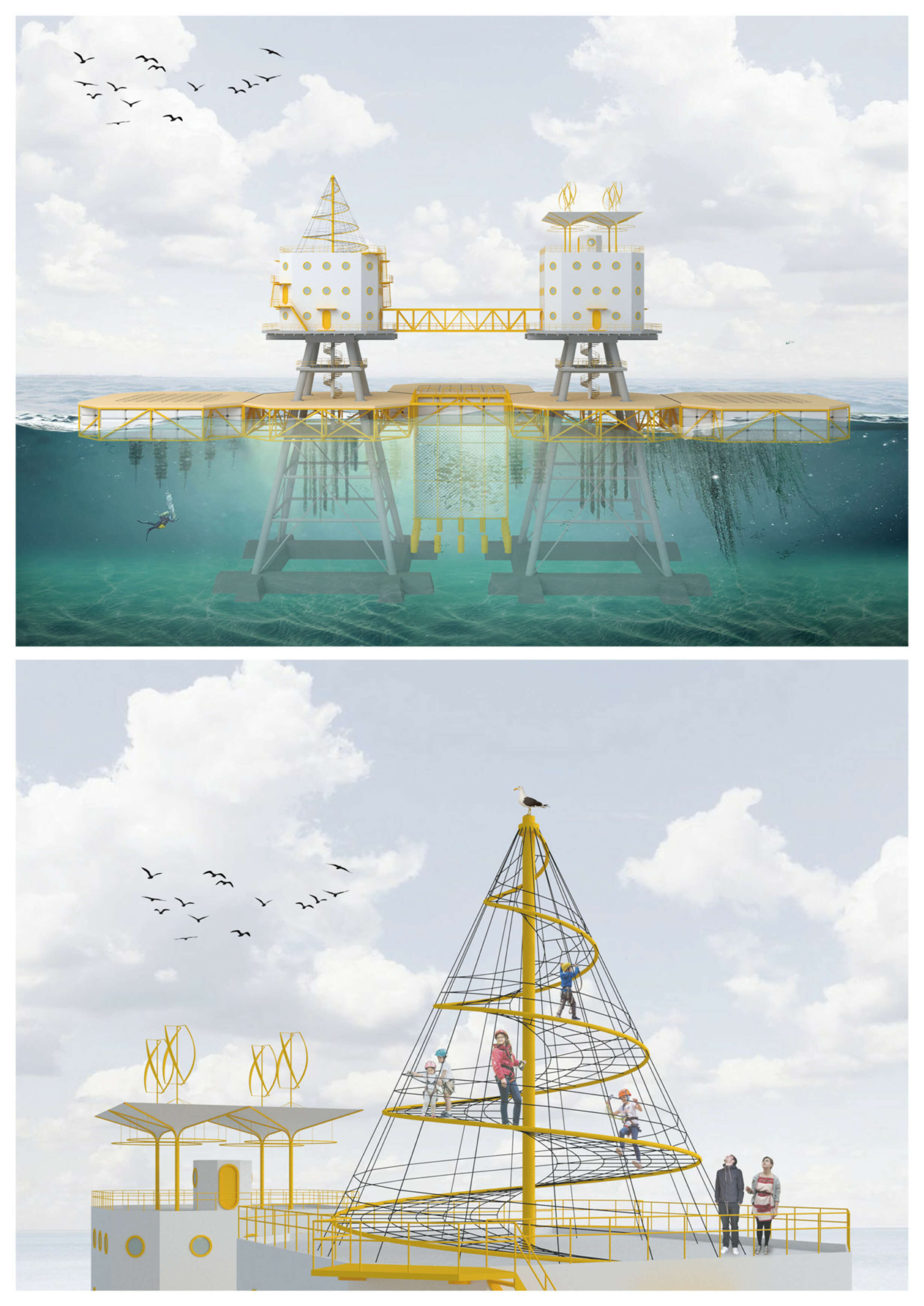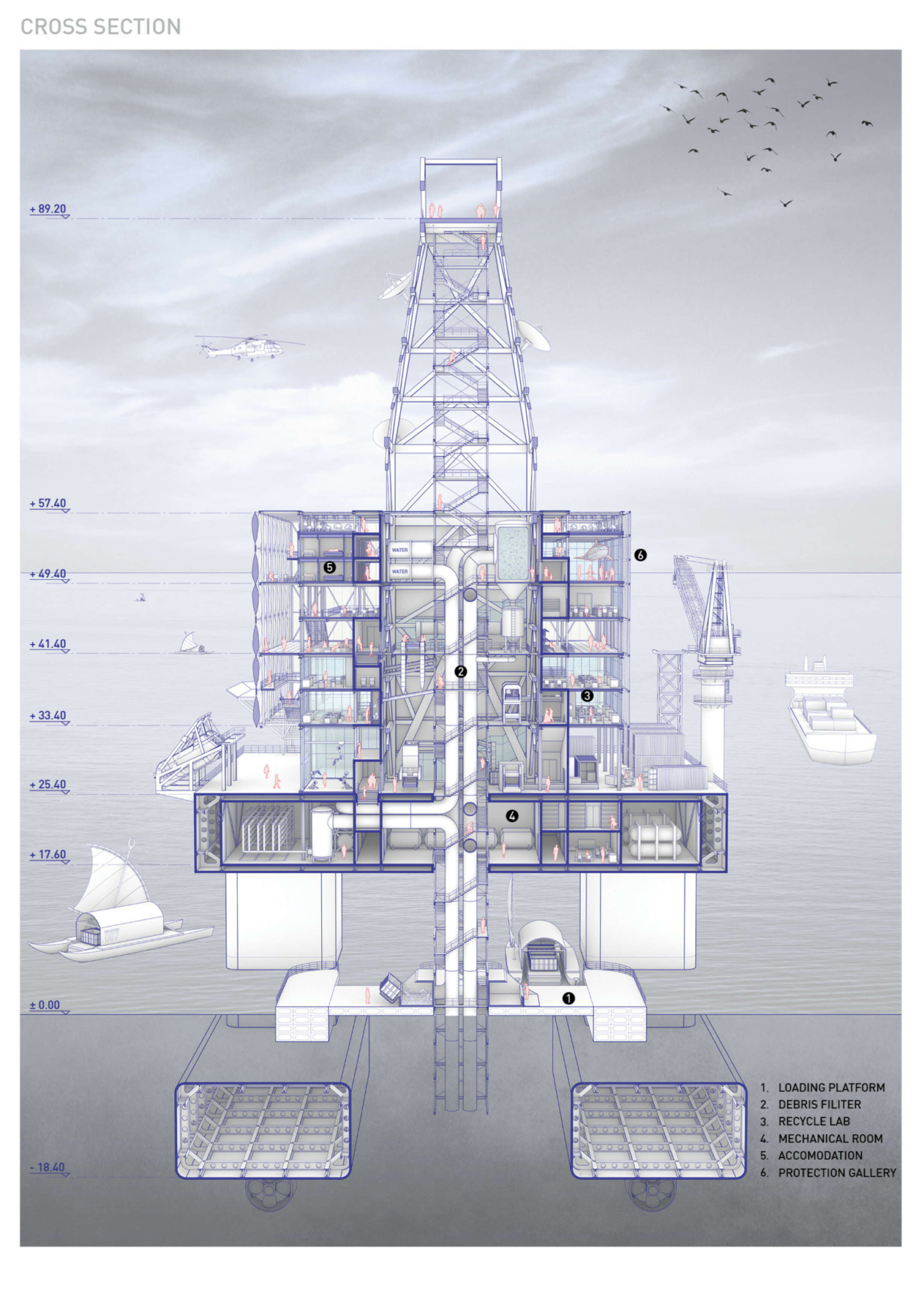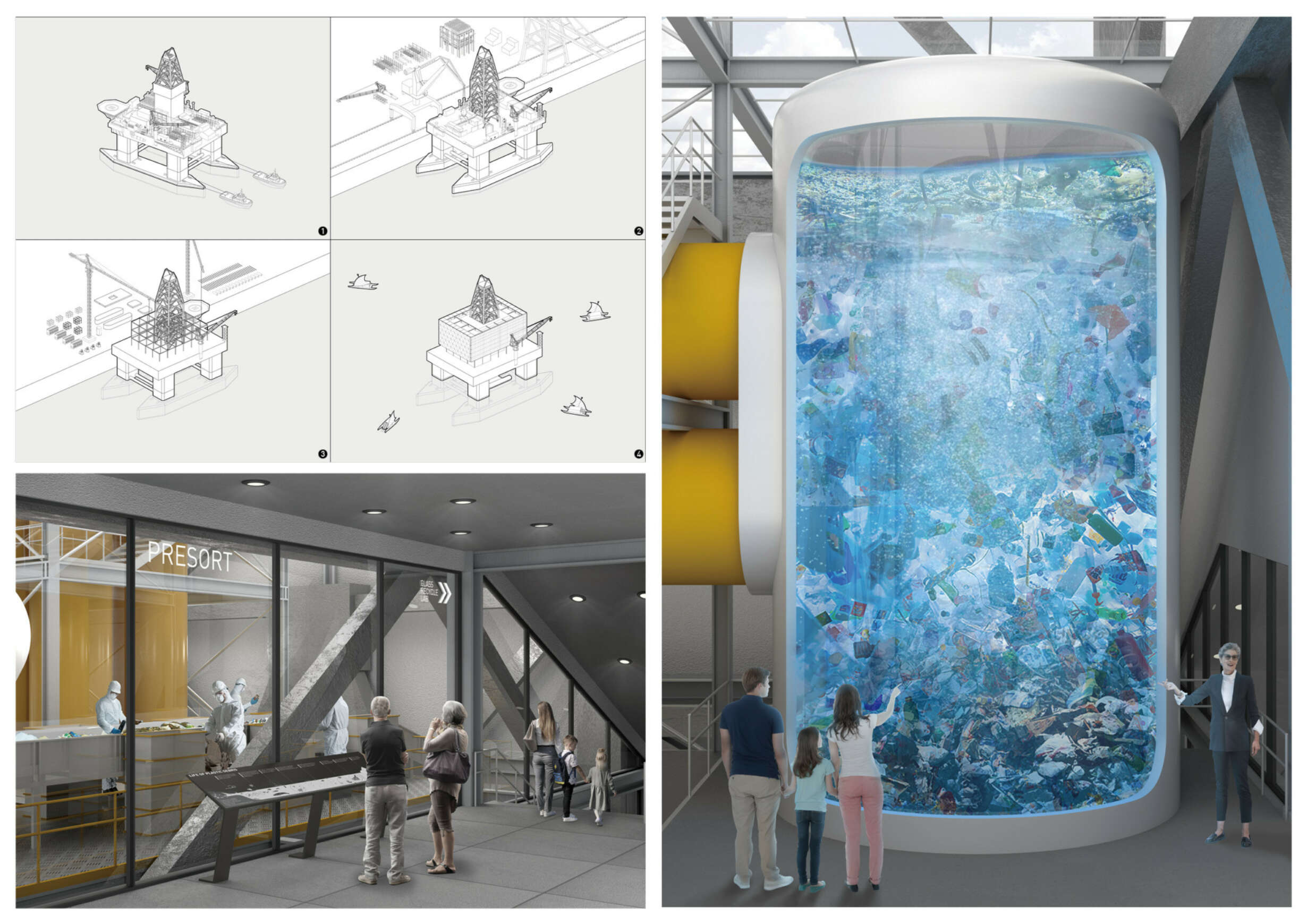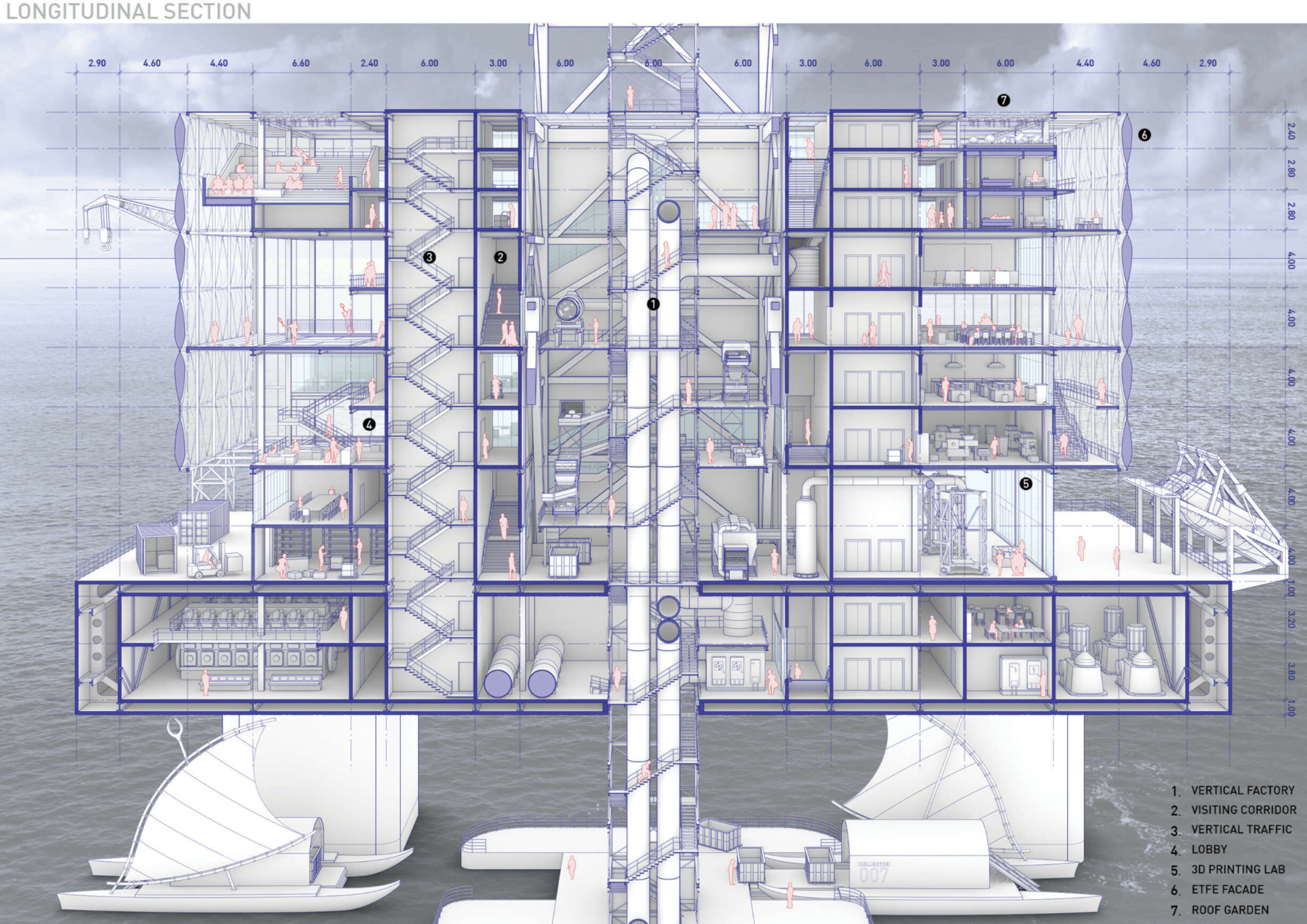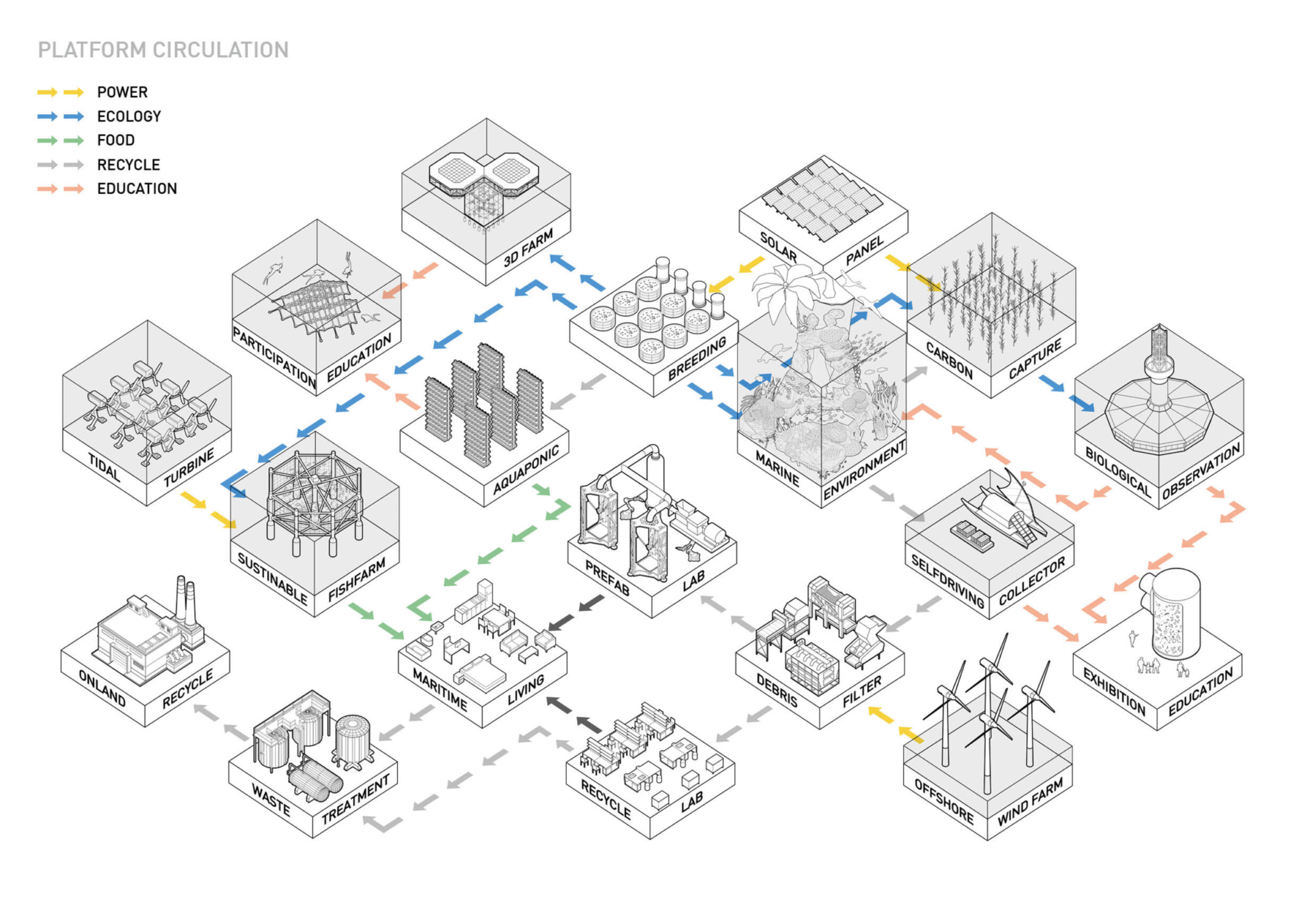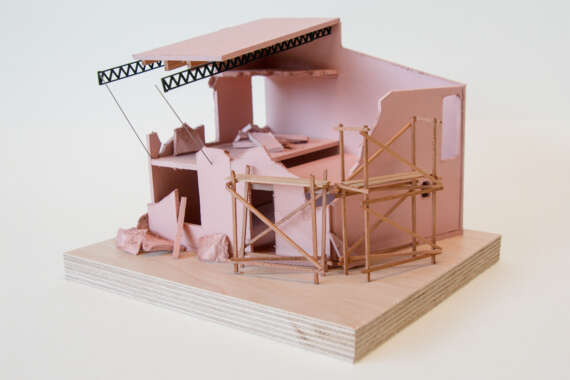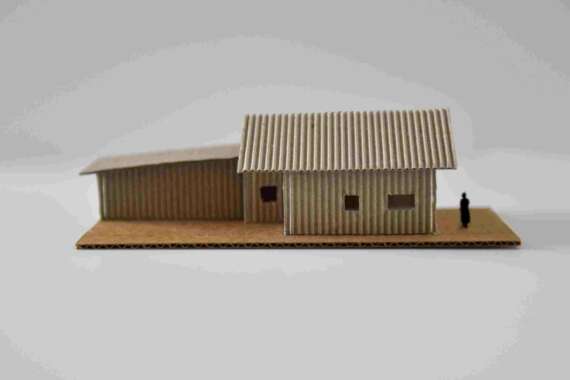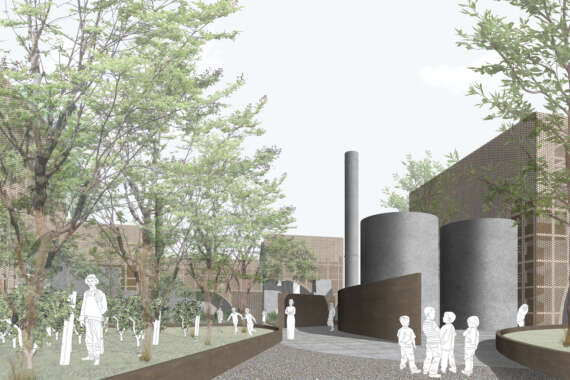This thesis proposes to use the increasing abandoned offshore platforms to facilitate a sustainable ecosystem that gives back to the marine environment. The new maritime architecture will use the original structures, solving the huge cost and secondary damage of demolishing the platforms. The thesis will take the Taranaki Basin in New Zealand as a starting point and envisage different possibilities for different forms of offshore platforms. These platforms will be transformed in different ways and given new environmental protection functions.
The thesis will investigate the potential of different platforms and the role their structure plays in different functions. By transforming this production organization with distinctive industrial characteristics, it will finally become a bridgehead for protecting the marine environment. The author believes that the industrialization symbol is distinctly represented by offshore drilling platforms, and its transformation to environmental protection facilities will cause more reflections on the pollution and destruction caused by humans.
The thesis believes that society should begin to pay attention to the issues of marine environmental protection and try to solve them. An eco-friendly maritime belt will be formed to pioneer active adaptation to and respond to threats to the marine environment. The community will uphold the principle of focusing on scientific propaganda, supplemented by direct intervention, awakening society’s attention to marine issues, and reducing marine environmental hazards.
